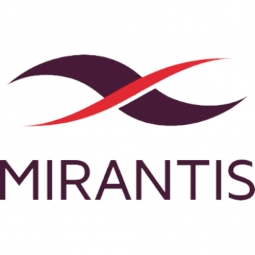Download PDF
G-Core’s Global OpenStack Infrastructure Speeds Wargaming’s Time-to-Market and Reduces Massive Multiplayer Game Deployment Costs
Technology Category
- Infrastructure as a Service (IaaS) - Cloud Computing
- Application Infrastructure & Middleware - API Integration & Management
Applicable Functions
- Discrete Manufacturing
- Product Research & Development
Use Cases
- Process Control & Optimization
- Predictive Maintenance
- Edge Computing & Edge Intelligence
Services
- Cloud Planning, Design & Implementation Services
- Software Design & Engineering Services
- System Integration
- Training
The Challenge
G-Core, a company that provides infrastructure for online multiplayer games, was facing challenges due to its tremendous growth. The fast-paced gaming market required clients to continuously improve games and quickly launch new features, and G-Core needed to make sure they were in a position to do that. However, G-Core struggled to cost-effectively maintain infrastructure performance and scale. Its game hosting spanned thousands of servers in 20 data centers and had even set a world record of 1,140,000 peak concurrent users. As platform expenses rose, G-Core needed improved resource utilization and cost margins. Furthermore, to shorten release cycles, gaming developers required self-service access to resources. Provisioning VM and bare metal servers, however, often involved release managers opening multiple tickets that took many days and administrators to resolve. The activity was complex, labor-intensive, and subject to human error. To help make Wargaming successful, G-Core had to help simplify the process of maintaining continuous integration and deployment of high-quality games.
About The Customer
G-Core is a company that provides infrastructure for online multiplayer games. It has designed its gaming IT infrastructure to meet the most demanding player expectations around the world. Its 11 locations across Russia and the Commonwealth of Independent States, each with 40 Gbps of bandwidth, host 100 million players per week and ensure industry-leading latency, availability, and cost metrics. This allows Wargaming and other valued customers to focus on game development instead of infrastructure issues. With 4000 employees and 150 million users, Wargaming leads the market with award-winning titles and innovative technology. Free-to-play games and continuous feature improvements have propelled its growth since 2011. Every minute of every day, millions of players from different countries connect to Wargaming titles on G-Core’s infrastructure to face others in battle – to interact, have fun, and win. This deep collaboration drives the two companies’ passion and pursuit of excellence.
The Solution
G-Core teamed with Wargaming to conduct an evaluation of cloud platforms. A move to private cloud infrastructure-as-a-service (IaaS) would mean a major transformation off existing virtualization systems and bare metal infrastructure. Thus, the companies’ engineers approached the idea carefully. After multiple Wargaming development and G-Core operations teams conducted an independent evaluation of cloud solutions and vendors, they unanimously agreed that OpenStack’s capabilities and flexibility met their requirements. The companies also evaluated other vendors’ cloud solutions but the offerings did not meet the needs. Using DevOps methodologies, Wargaming developers had already grouped applications that ran together for specific projects into OpenVZ containers that were deployed using YAML-based files. This meant G-Core’s transition to OpenStack required custom integrations into this existing framework. G-Core and Wargaming first turned to Mirantis because of its status as the top contributor to the OpenStack community. Upon meeting the team, however, the gaming partners were quickly impressed by Mirantis’ high degree of experience and professionalism in custom design and development.
Operational Impact
Quantitative Benefit
Related Case Studies.

Case Study
Remote Monitoring & Predictive Maintenance App for a Solar Energy System
The maintenance & tracking of various modules was an overhead for the customer due to the huge labor costs involved. Being an advanced solar solutions provider, they wanted to ensure early detection of issues and provide the best-in-class customer experience. Hence they wanted to automate the whole process.

Case Study
Predictive Maintenance for Industrial Chillers
For global leaders in the industrial chiller manufacturing, reliability of the entire production process is of the utmost importance. Chillers are refrigeration systems that produce ice water to provide cooling for a process or industrial application. One of those leaders sought a way to respond to asset performance issues, even before they occur. The intelligence to guarantee maximum reliability of cooling devices is embedded (pre-alarming). A pre-alarming phase means that the cooling device still works, but symptoms may appear, telling manufacturers that a failure is likely to occur in the near future. Chillers who are not internet connected at that moment, provide little insight in this pre-alarming phase.

Case Study
System 800xA at Indian Cement Plants
Chettinad Cement recognized that further efficiencies could be achieved in its cement manufacturing process. It looked to investing in comprehensive operational and control technologies to manage and derive productivity and energy efficiency gains from the assets on Line 2, their second plant in India.

Case Study
Airbus Soars with Wearable Technology
Building an Airbus aircraft involves complex manufacturing processes consisting of thousands of moving parts. Speed and accuracy are critical to business and competitive advantage. Improvements in both would have high impact on Airbus’ bottom line. Airbus wanted to help operators reduce the complexity of assembling cabin seats and decrease the time required to complete this task.

Case Study
Aircraft Predictive Maintenance and Workflow Optimization
First, aircraft manufacturer have trouble monitoring the health of aircraft systems with health prognostics and deliver predictive maintenance insights. Second, aircraft manufacturer wants a solution that can provide an in-context advisory and align job assignments to match technician experience and expertise.






